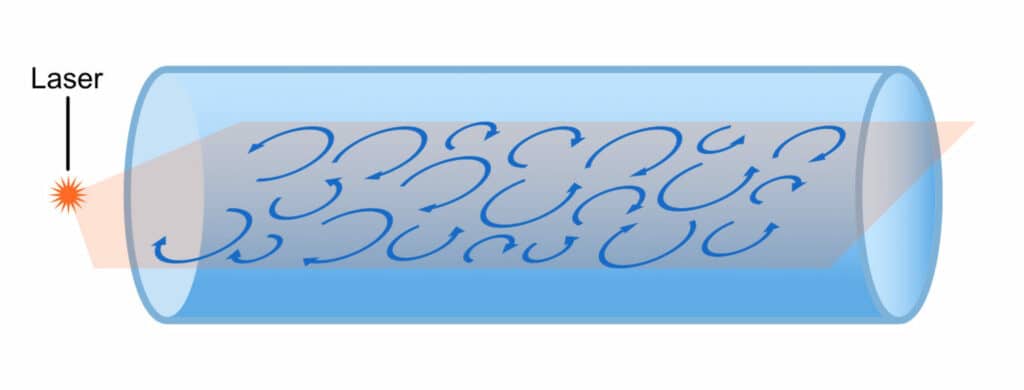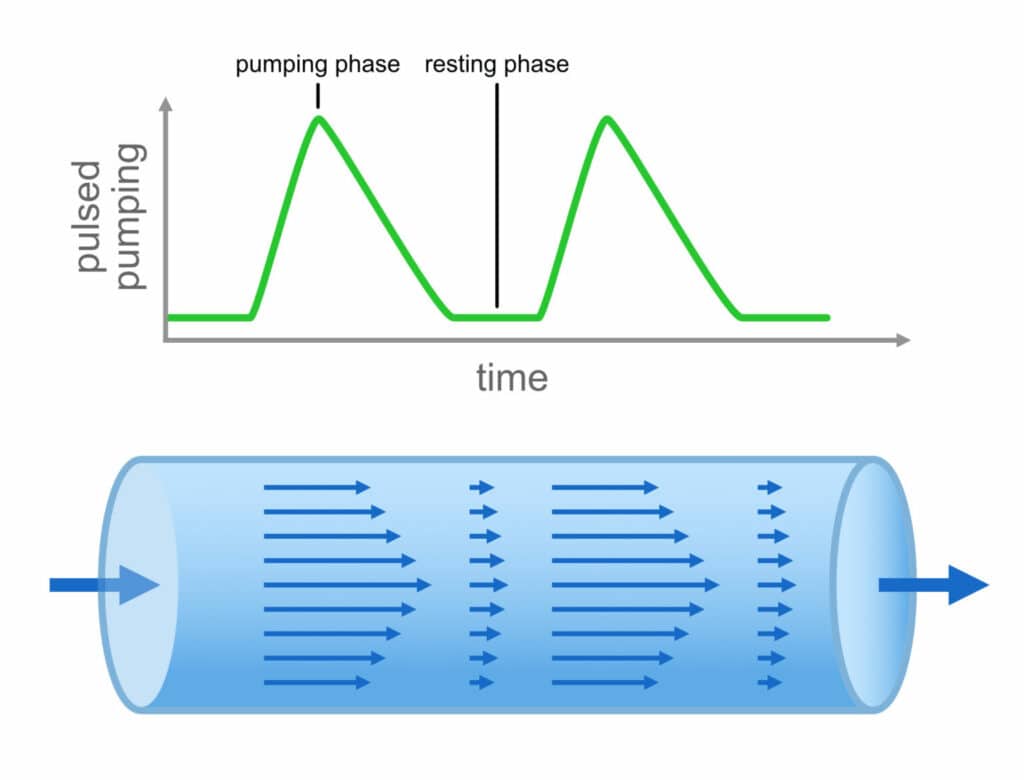Pumping liquids may seem like a problem already being solved, but scientists are still trying to improve it. Whether in big factories or the heating systems in our homes, using less energy for pumping would be a big help. Scientists at the Institute of Science and Technology Austria found a way to do this by copying how our hearts pump blood.
Much electricity worldwide goes into pumping liquids, like oil in factories or hot water in homes. To use less energy, the scientists at ISTA decided to learn from Nature. They found that if liquids are pumped in short bursts like our hearts beat, it reduces the energy needed because it makes the fluid flow more smoothly through the pipes. They published their findings in the journal Nature.
Davide Scarselli, first author of the study, said, “Over the years, researchers and engineers have been trying to make pumping fluids more efficient. While many solutions are being simulated or tested in labs, they often need to be simplified and, therefore, too costly to be implemented in real industrial applications. We were looking for an approach that does not require complicated structural changes to the infrastructure, like sensors and actuators.
Instead of changing the pipes themselves to make liquid flow more smoothly, the scientists took inspiration from our hearts. Unlike regular machines that pump steadily, the human heart pumps blood in a pulsing rhythm. They wanted to see if this heart-like pulsing could be better.
So, they set up experiments using clear pipes of different lengths and sizes to pump water. When water flows steadily through pipes, it creates chaotic swirls and eddies, like tiny tornadoes, which make it harder for the water to move and use up more energy.

They added tiny reflective particles to the water and shone a laser through the clear pipes to see this. The laser’s light bounced off the particles, and they took pictures to check if the water flow was chaotic or smooth.
To reduce friction, the scientists tested different ways of pulsing the water flow. Some pulsing methods started the water slowly and then stopped it quickly, while others did the opposite. Björn Hof explains what they found: “Usually, pulsating made it harder to pump the water and used more energy, which wasn’t what we wanted. But it worked much better when we added a short break between the pulses, like how our hearts rest between beats.”
By adding breaks between pumping pulses, the turbulence in the pipe decreased a lot. Davide Scarselli explains, “During the rest phase, turbulence goes down, which makes it easier to reduce friction when we start pumping again.”

When they copied the heart’s pumping motion, they reduced friction by 27% and used 9% less energy. Björn Hof said, ‘This is good for our bodies because it protects our blood vessels‘ inner layer from damage due to turbulence. We might use this idea in the future.’
But making genuine pumps work like this might take much work. It would need changes to the pumps themselves. Still, this is simpler and cheaper than changing the pipes or adding special devices. The scientists hope others will use their idea for industrial uses.
Scientists at ISTA showed that copying how our hearts pump can save a lot of energy when moving liquids. Their research offers valuable insights into improving pumping efficiency and reducing energy consumption across various industries.
Journal reference:
- Scarselli, D., Lopez, J.M., Varshney, A. et al. Turbulence suppression by cardiac-cycle-inspired driving of pipe flow. Nature. DOI: 10.1038/s41586-023-06399-5.
